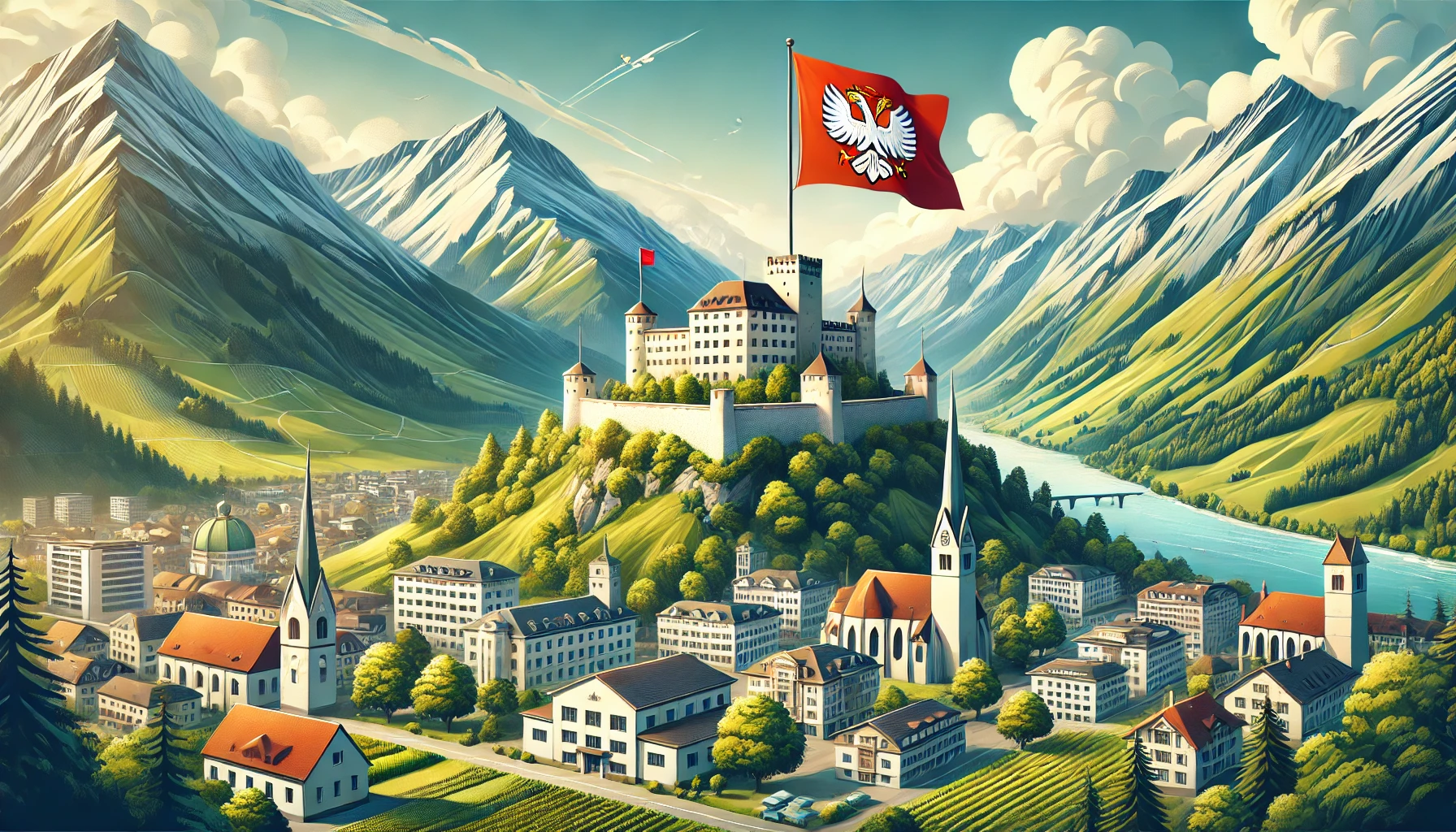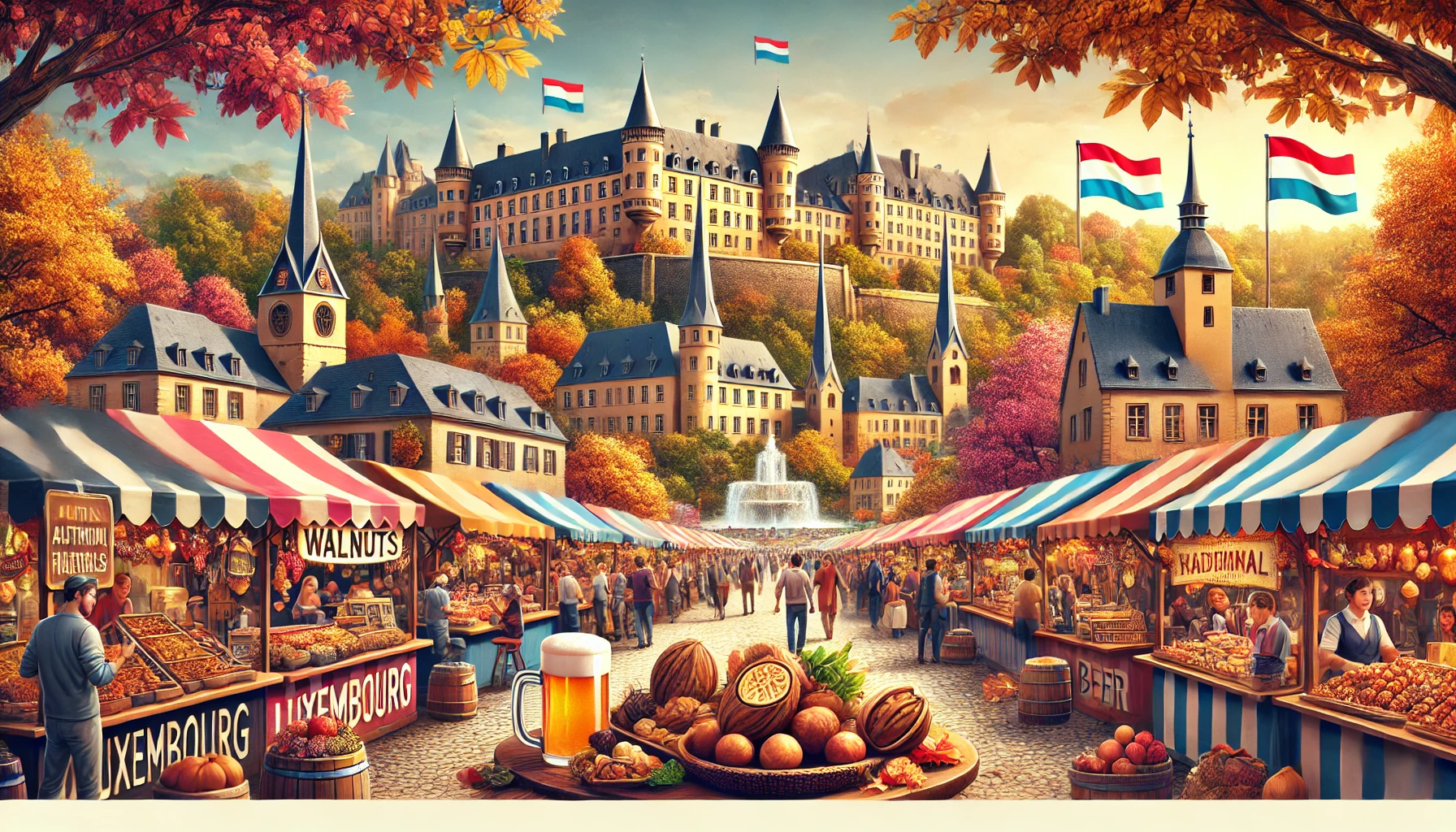Exploring Liechtenstein: Capital, Geography, Population, and Language
Liechtenstein is one of the smallest and most unique countries in the world, yet it often flies under the radar. Nestled in the heart of Europe, this microstate is rich in history, culture, and economic significance. In this blog, we’ll explore everything you need to know about Liechtenstein, from its capital city to its population, language, and more. Whether you’re a traveler, a history buff, or someone curious about European countries, Liechtenstein offers plenty to discover.
Vaduz: The Capital of Liechtenstein
When people think of European capitals, major cities like Paris, Rome, and Berlin often come to mind. However, Liechtenstein’s capital, Vaduz, is a charming, small city that serves as the political and cultural heart of the country.
The Role of Vaduz
Vaduz is not just the capital but also the administrative center of Liechtenstein. It houses the official residence of the Prince of Liechtenstein, the Vaduz Castle, which is perched on a hill overlooking the city. Although the castle itself is not open to the public, it is an iconic symbol of the country and offers stunning views of the surrounding landscape.
The city is also home to the Liechtenstein Parliament, government buildings, and several museums that reflect the rich cultural heritage of the nation. Despite its small size, Vaduz plays a crucial role in Liechtenstein’s political and cultural life, making it a must-visit for anyone exploring the country.
Attractions in Vaduz
Vaduz is known for its cultural attractions, including the Liechtenstein National Museum, which provides insights into the history and culture of the country. Another key attraction is the Kunstmuseum Liechtenstein, a museum of modern and contemporary art that houses works by international and local artists. For those interested in the country’s postal history, the Postage Stamp Museum is a fascinating stop.
Whether you’re interested in history, art, or just want to stroll through a picturesque European capital, Vaduz offers a peaceful and enriching experience.
Liechtenstein on the Map: A Small Yet Strategic Location
Liechtenstein may be small, but its location is significant. Sandwiched between Switzerland and Austria, Liechtenstein is often overlooked by travelers, yet it boasts some of the most stunning landscapes in Europe.
Geography of Liechtenstein
Liechtenstein covers an area of just 160 square kilometers, making it the sixth smallest country in the world. Despite its small size, the country features diverse landscapes, including the Rhine River, which forms its western border, and the Alps, which dominate the eastern part of the country.
The country’s terrain is largely mountainous, making it a haven for outdoor enthusiasts. Hiking, skiing, and mountaineering are popular activities, and the country’s well-maintained trails offer breathtaking views of the Alps and the Rhine Valley.
Liechtenstein’s Borders and Access
Liechtenstein’s borders are only 76 kilometers long, but its location makes it an important transit route in Europe. The country is landlocked, with no airports or seaports, but it is easily accessible by road and rail from Switzerland and Austria. This strategic location has contributed to Liechtenstein’s economic success, particularly in terms of trade and finance.
Population of Liechtenstein: A Small, Close-Knit Community
Liechtenstein’s population is one of the smallest in the world, yet it is diverse and vibrant. Understanding the Liechtenstein population provides insights into the country’s unique social fabric.
Demographics of Liechtenstein
As of 2024, Liechtenstein’s population stands at approximately 39,000 people. The population is evenly distributed across the country’s 11 municipalities, with Vaduz being the most populous. Despite its small size, Liechtenstein is home to a diverse population, with a significant number of expatriates from neighboring countries and beyond.
The country has a high standard of living, with a strong social welfare system and a low crime rate, making it an attractive place to live. The population is well-educated, with a high literacy rate and a strong emphasis on higher education and vocational training.
Cultural and Social Life
Liechtenstein’s small population contributes to a close-knit community where social bonds are strong. The country celebrates various cultural events and festivals throughout the year, including the National Day on August 15th, which is marked by parades, fireworks, and public celebrations.
Despite its small size, Liechtenstein has a rich cultural life, with numerous museums, theaters, and music festivals. The country’s residents take pride in their heritage, and there is a strong emphasis on preserving traditional customs and practices.
The Language of Liechtenstein: A Blend of Tradition and Modernity
Language is a key aspect of any country’s identity, and in Liechtenstein, it reflects the nation’s unique cultural blend. Understanding the Liechtenstein language offers a glimpse into the daily life and communication within this small country.
Official Language: German
The official language of Liechtenstein is German, which is used in government, education, and the media. However, the German spoken in Liechtenstein is influenced by the Alemannic dialect, which is also spoken in parts of Switzerland and Austria. This dialect gives the local language a distinct flavor, and while standard German is widely understood, the local dialect is often used in everyday conversation.
Multilingualism in Liechtenstein
Due to its proximity to Switzerland and Austria, and its status as a financial center, Liechtenstein is a multilingual society. English is widely spoken, especially in business and tourism, and many residents are fluent in French and Italian as well. This multilingualism reflects the country’s openness and its strong connections with neighboring countries.
For visitors, navigating the language barrier in Liechtenstein is relatively easy, as most people speak at least one foreign language, and many signs and public information are available in multiple languages.
Liechtenstein’s Economy: Small But Mighty
Despite its small size, Liechtenstein boasts one of the highest GDPs per capita in the world. The Liechtenstein GDP is a testament to the country’s economic resilience and innovation.
Key Economic Sectors
Liechtenstein’s economy is highly diversified, with key sectors including finance, manufacturing, and services. The country is known for its strong financial sector, with numerous banks, insurance companies, and investment firms operating within its borders. This financial prowess is supported by a favorable tax regime and a robust legal framework.
Manufacturing also plays a significant role in the economy, particularly in the production of high-quality machinery, tools, and dental products. Liechtenstein’s industrial sector is highly innovative, with a strong emphasis on research and development.
Economic Growth and Stability
Liechtenstein’s economic growth has been steady, driven by its ability to adapt to global economic trends and its strong trade relationships with other European countries. The country is a member of the European Economic Area (EEA), which allows it to participate in the EU’s single market while maintaining its sovereignty.
The high Liechtenstein GDP reflects the country’s economic stability and its ability to attract investment from around the world. This economic success has also contributed to a high standard of living for its residents, with low unemployment rates and a strong social welfare system.
Citizenship in Liechtenstein: A Privilege of Few
Obtaining Liechtenstein citizenship is a challenging process, reflecting the country’s small size and exclusive nature. However, for those who succeed, it offers numerous benefits, including access to the European Economic Area and a high quality of life.
Requirements for Citizenship
Liechtenstein’s citizenship laws are among the most restrictive in Europe. There are two primary ways to obtain citizenship: by birth or through naturalization. Citizenship by birth is granted to those born to at least one Liechtenstein parent. For foreigners, the path to naturalization is long and requires a minimum of 30 years of residency, though this can be reduced under certain circumstances, such as marriage to a Liechtenstein citizen.
Naturalization also requires applicants to demonstrate proficiency in German, integration into the local community, and a clean legal record. Given the stringent requirements, few foreigners successfully obtain Liechtenstein citizenship each year.
Benefits of Citizenship
Despite the challenges, obtaining Liechtenstein citizenship comes with significant benefits. Citizens enjoy a high standard of living, access to excellent education and healthcare, and the ability to live and work in any country within the European Economic Area. Additionally, Liechtenstein citizens benefit from the country’s strong social welfare system and low tax rates.
For those who value privacy and security, Liechtenstein’s citizenship offers the added benefit of living in one of the safest and most stable countries in the world.
Liechtenstein’s Flag: A Symbol of National Identity
The Liechtenstein flag is a symbol of the country’s history, sovereignty, and national pride. Understanding the significance of the flag provides insights into the country’s identity and values.
Design and Colors of the Flag
The Liechtenstein flag consists of two horizontal bands of blue and red, with a gold crown in the top left corner. The blue represents the sky, while the red symbolizes the fires that warm the homes of the people. The crown was added in 1937 to distinguish Liechtenstein’s flag from that of Haiti, which at the time had a similar design.
The flag is a source of pride for Liechtensteiners, symbolizing their independence and unity as a nation. It is prominently displayed during national holidays and official events, reflecting the country’s strong sense of identity and tradition.
History of the Flag
The current design of the Liechtenstein flag was adopted in 1921, though the country has used various flags throughout its history. The addition of the crown in 1937 marked the final modification, ensuring that Liechtenstein’s flag was unique on the world stage.
This change was prompted by the discovery during the 1936 Summer Olympics that Liechtenstein’s flag was identical to that of Haiti. The addition of the crown was a way to distinguish Liechtenstein’s flag, reflecting the country’s sovereignty and the monarchy’s importance in its political system.
The flag is a source of pride for Liechtensteiners, symbolizing their independence and unity as a nation. It is prominently displayed during national holidays and official events, reflecting the country’s strong sense of identity and tradition.
Discovering Liechtenstein’s Rich History
Liechtenstein’s history is deeply intertwined with that of its European neighbors, yet it has maintained a distinct identity. The Liechtenstein history is marked by strategic alliances, economic resilience, and the preservation of sovereignty.
Early History
Liechtenstein was established in 1719 when the regions of Vaduz and Schellenberg were purchased by the Liechtenstein family and united to form the Principality of Liechtenstein. Despite its small size, the principality played a strategic role in the region, navigating the complexities of European politics while maintaining its autonomy.
Throughout its history, Liechtenstein has successfully avoided the conflicts that have ravaged much of Europe, largely due to its neutrality and the strategic alliances it has formed. This stability has allowed the country to develop a strong economy and preserve its cultural heritage.
Modern Developments
In the 20th century, Liechtenstein transformed from a predominantly agricultural society into a prosperous, industrialized nation. The country’s decision to align its currency with Switzerland’s and its membership in the European Economic Area have been crucial to its economic success.
Today, Liechtenstein is known for its strong financial sector, high standard of living, and political stability. The country continues to thrive as a model of economic resilience and good governance, attracting businesses and residents alike with its favorable conditions.
Liechtenstein – A Small Country with a Big Impact
Liechtenstein may be one of the smallest countries in the world, but it offers a wealth of history, culture, and economic significance. From its picturesque capital, Vaduz, to its strategic location in the heart of Europe, Liechtenstein is a unique blend of tradition and modernity.
The Liechtenstein population is small but diverse, contributing to a vibrant community where multilingualism and cultural events play a central role. The Liechtenstein language, primarily German, is a reflection of the country’s heritage and its connections with neighboring countries.
Liechtenstein’s GDP and economic stability are remarkable for a country of its size, making it an attractive destination for businesses and investors. Meanwhile, obtaining Liechtenstein citizenship remains a privilege reserved for a select few, reflecting the country’s exclusivity and high standards.
The Liechtenstein flag, with its distinctive blue, red, and gold design, symbolizes the country’s history, sovereignty, and national pride. This flag, along with the country’s rich history, tells the story of a nation that has successfully preserved its independence and prosperity for over three centuries.
Whether you’re planning a visit, interested in its history, or curious about its economy, Liechtenstein is a fascinating country that punches well above its weight on the global stage.
For more insights into European countries and other educational topics, be sure to visit Regent Studies, where you can find a wealth of resources to expand your knowledge and understanding.




